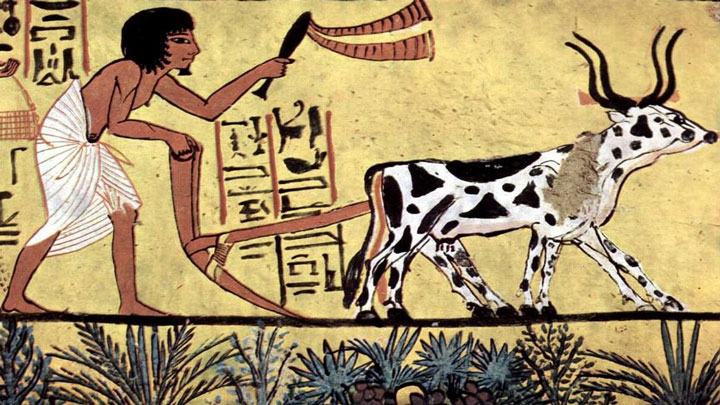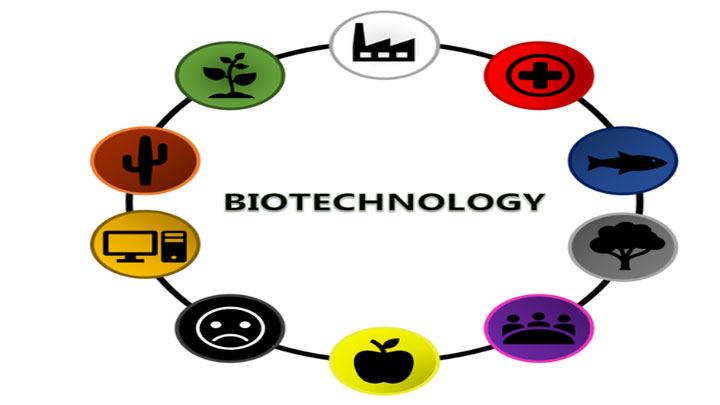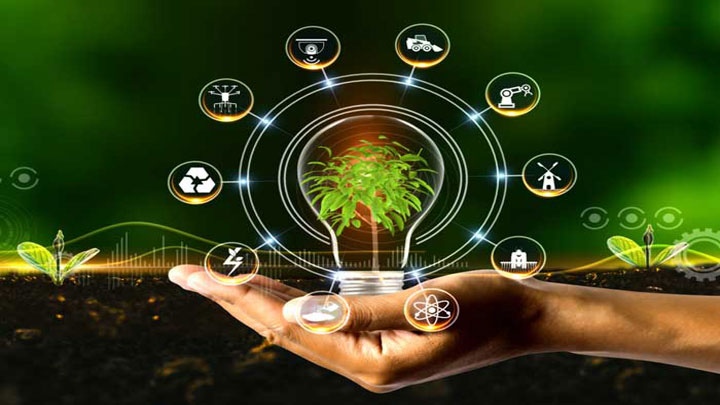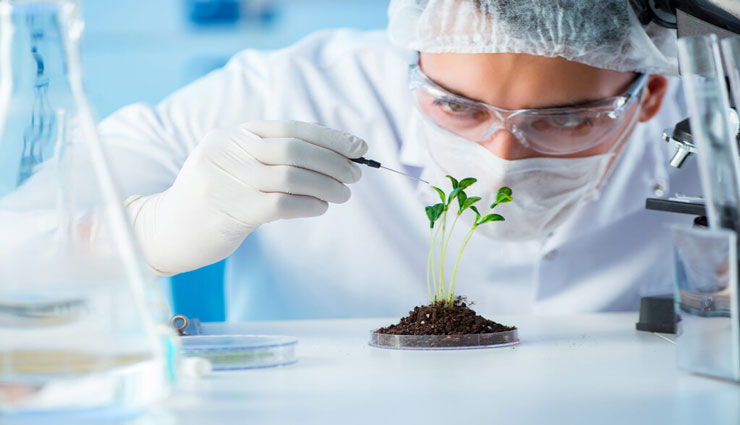When you go to the store and want to buy cheese, milk, or yogurt, you purchase a product that has been produced using biotechnology. When injecting the corona vaccine, you introduce one of the biotechnology achievements to your body. We have been using biotechnology for thousands of years to produce crops or grow animals and plants, but in its modern sense, this word is only a few decades old. Of course, it has completely changed our lives in these few decades. If you want to get acquainted with this exciting and practical field, stay with us until the end of the article. In the final part, we talk about the job market in this field in Iran and the world.
What is biotechnology?
Biotechnology or biotechnology uses biological science to produce products, methods, and organisms with new or improved properties. These works aim to increase the health and well-being of human society. Therefore, biotechnology or biotech can be considered the practical application of biological science. Biotechnology dates back thousands of years, but this field has developed extensively with the advancement of science and technology since the 19th century.
History of Biotechnology

Biotechnology started at least 6 thousand years ago and simultaneously with the agricultural revolution. Our ancestors learned how to use biological processes to their advantage. For example, fermentation produced bread, alcohol, and cheese. In agriculture and animal husbandry, we manipulated the genes of domesticated plants and animals through selective breeding to benefit from their improved characteristics.
Selective breeding means that humans choose a plant or animal species and cultivate it. This way, by growing and reproducing, this species transfers our desired characteristics to the next generation. One of the most famous examples is dogs. Humans have been selecting and using more docile wolves (ancestors of today’s dogs) for thousands of years. Gradually, the next generations of these wolves became more obedient until the dog species was born, which today is called the faithful friend of man.
Selective breeding and fermentation were symbols of biotechnology for centuries. The limitations of science and technology did not allow humans to dominate nature until the 19th century, when scientific advances and the industrial revolution began, the situation changed. First, Austrian biologist Gregor Mendel established the basic principles of genetics and the heredity of living organisms. At the same time, Louis Pasteur and Joseph Lister discovered that fermentation is a microbial process. This discovery initiated using various bacteria to produce new products in the food industry. Biotechnology was born as an academic discipline in the 20th century with the advancement of biological science and the development of new tools and methods for examining cells, bacteria, and genes.
A look at the achievements of modern biotechnology
In the last one hundred years, biotechnology using scientific advances in the fields of biology, cell biology, chemistry, nanotechnology, genetic engineering, and information technology has led to many achievements, some of the most important of which are:
- In 1919, Hungarian scientist Karl Erecki used the term biotechnology for the first time.
- In 1928, Fleming discovered the world’s first antibiotic in his laboratory.
- In 1943, Oswald Avery discovered that the DNA strand carries genetic data.
- In 1953, James Watson and Francis Crick discovered the helical structure of the DNA strand.
- In the 1960s, the first insulin drug and measles, mumps, and rubella vaccines were developed in the laboratory.
- In 1969, the first enzyme was produced in a laboratory environment, outside the body of a living organism.
- In 1973, Herbert Boyer and Stanley Cohen became the founders of genetic engineering. They transferred a strand of DNA from one bacterium to another.
- In 1993, the first transgenic products entered the field of agriculture and animal husbandry. This year, the first hormones to increase cows’ milk were used in the United States.
- In 2020, the first vaccine made with mRNA technology was released to the world.
These are only a part of the achievements of biotechnology. As you have seen in the examples, these achievements have transformed many different aspects of our lives.
Types of biotechnology

Biotechnology is considered an interdisciplinary field; specialists use different fields and disciplines to advance their projects. Based on this, biotechnology is divided into eight sections by color classification, which we will examine in the following.
1. Red
Biotechnology is medicine in which living organisms are used to produce drugs. One of the exciting applications of this department is the use of stem cells to build different body organs.
2. white or gray
It includes the industry field, such as producing new biofuel chemicals.
3. Green
This sector is related to agriculture and animal husbandry, such as producing pest-resistant agricultural products, vaccinating animals against diseases, and all those activities in these two fields that are compatible with the environment.
4. golden
This department is known as bioinformatics and is the result of combining two fields of biotechnology and information technology. In this field, methods are developed to collect, store and analyze health and treatment data.
5. Blue
Combining marine science with biotechnology. In this section, it is tried to produce health, cosmetic and therapeutic products from the plant and animal life of the sea.
6. yellow
The purpose of this department is to produce and improve food quality. Activists in this field try to discover new methods to create new products or increase the production of food products. This field’s most notable achievement is using various fermentation processes. For example, probiotic yogurt and cheese enriched with vitamin D3 are examples of these products.
7. Purple
With the help of the law department, this department ensures that the various achievements of biotechnology align with society’s laws and regulations. Specialists in this field are lawyers who also specialize in biotechnology.
8. Black
The use of biotechnology to produce biological weapons is included in this category.
Applications of biotechnology
The applications of biotechnology have been expanded into four main areas, which we will examine in the following.
1. the environment
Biotechnology aims to discover and invent sustainable and environmentally friendly methods to reduce pollution. Plant treatment is an exciting example of the application of this field for environmental protection. In this method, some unique and manipulated plants clean soils contaminated with heavy metals and other pollutants.
2. medical
Biotechnology in medicine aims to produce new drugs, create new methods to fight diseases, and increase societal health and treatment. Today, the world’s pharmaceutical companies, in addition to making drugs, have research institutes for researching new drugs. From the production of antibiotics and vaccines to new cosmetics and health products, they all need to explore medical biotechnology activities.
3. industry
Using microorganisms (microbial organisms) to produce food and non-food products is the most crucial goal of biotechnology in sectors. For example, many of the dairy products we consume these days are the result of applying biotechnological methods.
Another field of application of biotechnology in the industry, which has been growing these years and is associated with the environment, is the production of vegetable fuels or biomass. This method uses plants such as corn to produce vegetable fuel.
4. agriculture

Biotechnology in agriculture aims to produce more and healthier plant and animal products. The ultimate goal is to provide food security using biotechnology. These goals are achieved through methods such as having environmentally friendly pesticides, genetic modification of plant seeds, production of artificial meat in the laboratory, and adding nutrients such as vitamins to plant and animal products.
What are the problems and challenges facing biotechnology?
Biotechnology, like any other field, has faced challenges or caused problems due to the abuse of some people and groups or ignorance. Some of these issues include:
- Production of weapons; Using biotechnology knowledge to produce biological weapons by manipulating viruses or pathogenic bacteria.
- Reducing biodiversity; When we cultivate only one or a few limited species through methods such as selective breeding or genetic modification, we minimize the possibility of the growth and survival of other species. For example, only the Cavendish banana (yellow banana) species from the banana plant family are cultivated worldwide. This has caused the genetic reserve of the banana species to decrease and the Cavendish banana to be less resistant to pests and diseases. This issue has caused experts to warn about the danger of banana extinction.
- Decrease in soil fertility; Genetically modified plants require more nutrients to grow. This issue may reduce soil fertility in the long run and increase the need for chemical fertilizers to strengthen the soil.
- Increase in costs; The use of biotechnology in different fields means an increase in the finished price of the product compared to a similar sample. This issue causes a general rise in prices in the market of a particular product.
- Ethical issues; Alteration and manipulation of genes have created ethical questions. Do we have the right to manipulate other species for our benefit? On the other hand, human genetic modification is also a controversial issue in this field. These concerns and questions have caused various societies to place restrictions on this field. For example, one of these restrictions prohibits trying to copy humans (creating a human in a laboratory). Assuming we could do so technologically, the laws of almost all societies currently do not allow it.
Biotechnology in Iran and the world
The history of using biotechnology in our country to produce medical products dates back to the establishment of the Pasteur Institute in 1999 and the Razi Vaccine Research and Serum Institute in 1994. But biotechnology was established in the late 60s and early 70s with this field and several specialized institutes.
Today, this field is offered at the undergraduate level in 12 universities in different parts of the country. In the master’s degree, there are six majors: environmental and marine, microbial, molecular, medical, biological processing, and agriculture. The continuous specialized doctorate in this field is offered only at Tehran University, but it is possible to complete a non-continuous doctorate at other universities.
In addition to universities, various educational courses and workshops are held in research centers and institutions such as Pastor and Royan, which graduate students can participate in to increase their skills and network.
The biotechnology labor market in Iran
In the past years, job positions in the biotechnology field were mainly limited to research and teaching. Still, with the filling of the capacity of these fields, now most of the graduates are encouraged to find ideas and produce new products in knowledge-based institutions. Graduates of this field can work in the food industry, pharmaceutical companies, animal farming, and agriculture, depending on their orientation and skills.
In general, the labor market of any field depends on economic conditions. Therefore, it is impossible to imagine that job opportunities will increase in the states of recession and embargo.
Biotechnology job market abroad
This field has a broad job market in the world due to its comprehensiveness. Biotechnology students must be fluent in English because the teaching resources in this field are mainly in English, and even the translated books are full of foreign words. Therefore, graduates of this field can immigrate for work or study after obtaining the required score in the IELTS or TOEFL exams or any other valid and required degree. Countries such as Germany and the United States have created suitable conditions for the migration of elites in this field. Extensive industries and research institutions in these two countries need biotechnology specialists in various areas.
Common questions
1. What is biotechnology?
Biotechnology or biotechnology results from the combination of biology and technology. This science is interdisciplinary because various sciences and technologies are used, from chemistry to computer science and nanotechnology.
2. What is the purpose of biotechnology?
The general goal of this field is to use biological knowledge to produce new products or improve industrial and agricultural processes in various areas, for example, producing vaccines and new drugs, improving plant seeds, increasing milk production, and cleaning the environment with the help of plants.
3. In what areas is biotechnology used?
Biotechnology applications can be seen in 4 fields: agriculture, industry, medicine, and environment.
you say
Are you a student or graduate of this field? What experience do you have working in this field in Iran and the world? How do you see the future of this field? Please share your thoughts with us and other audiences.



